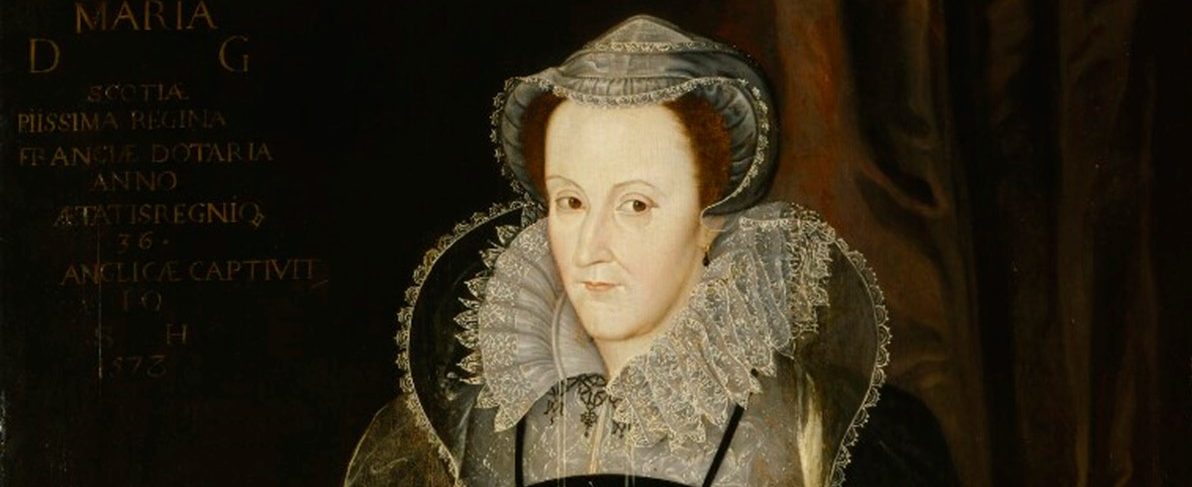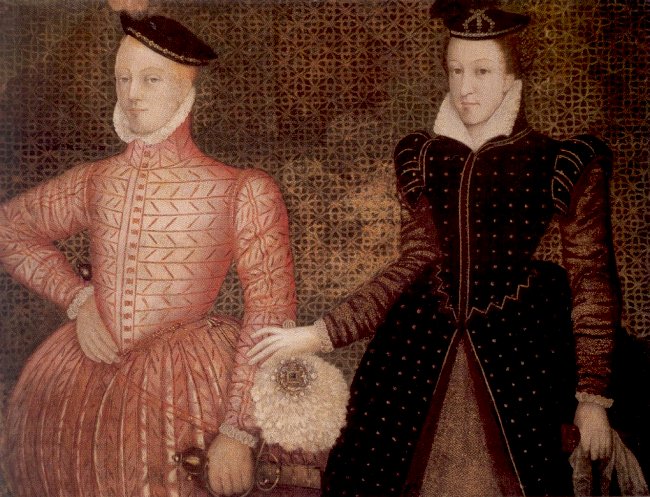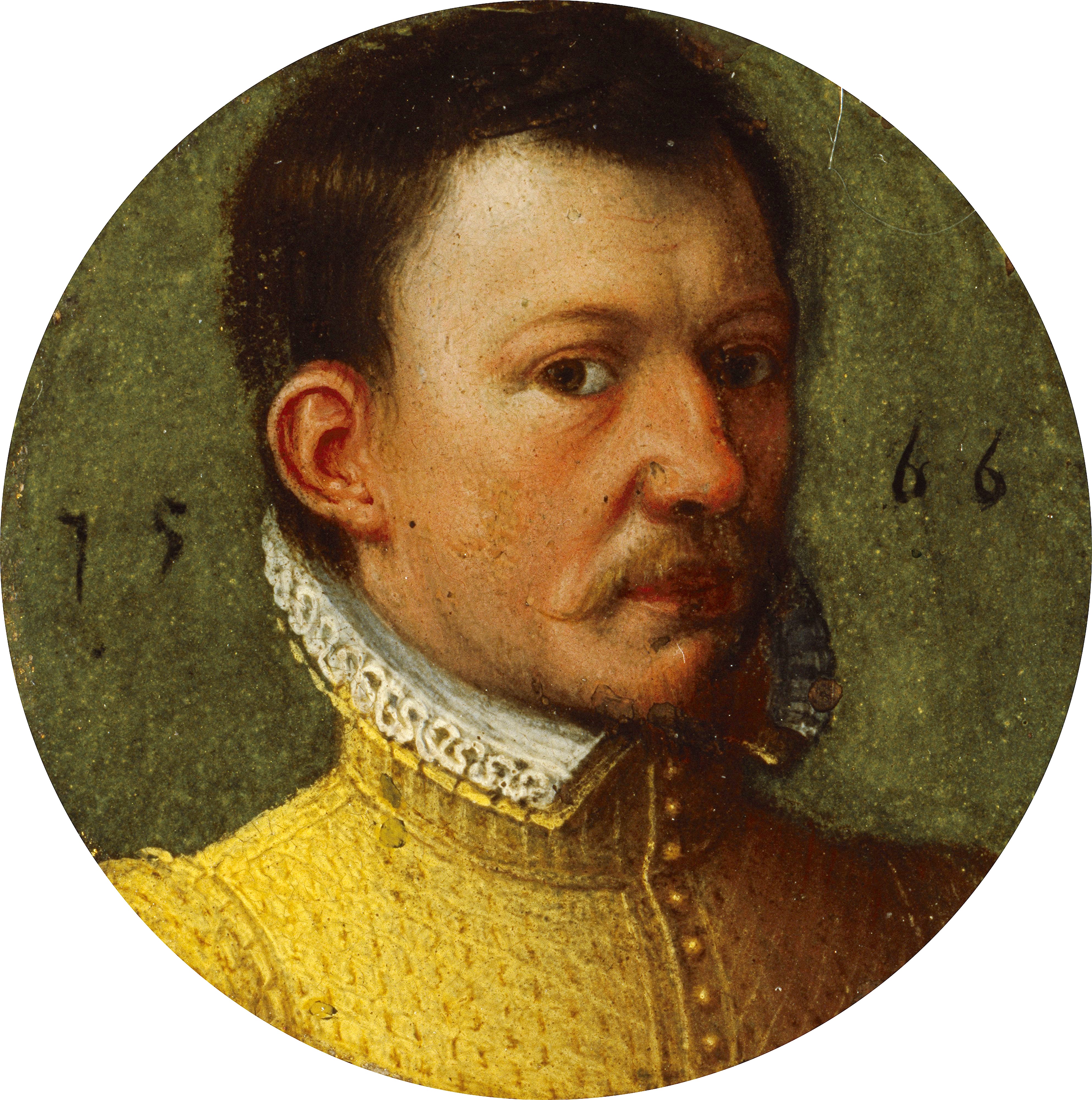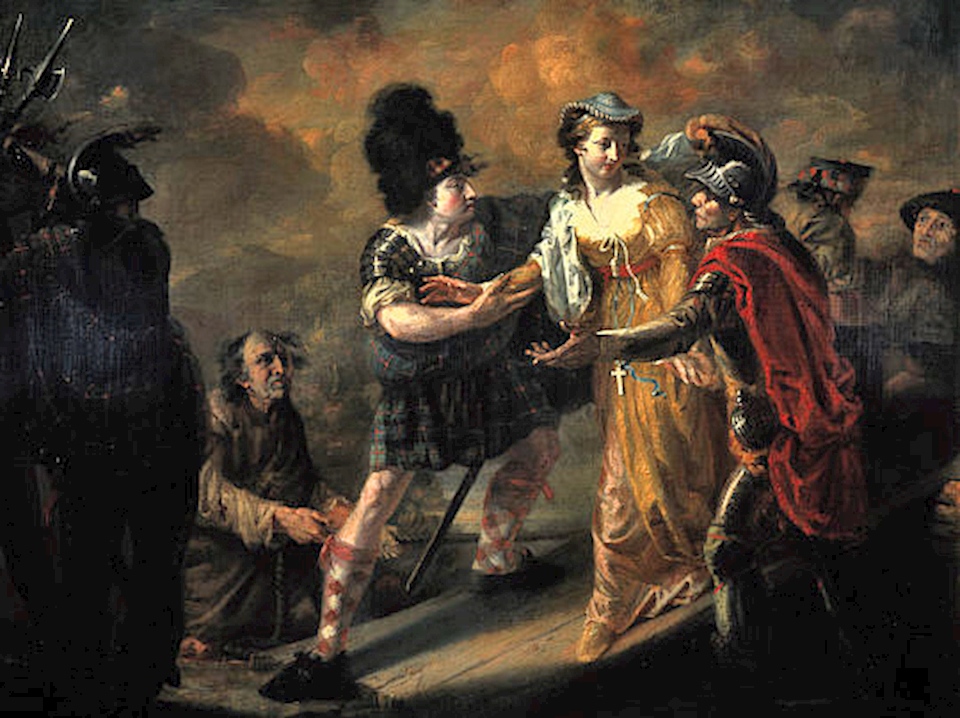Content Warning: As the title suggests, here be discussion of historical rape and pregnancy loss.
The most asked question on this blog is; Was Mary, Queen of Scots raped? Reign, Starz’ highly dramatised series about the life of Mary, uses the threat of rape against the Queen frequently and on one occasion it goes ahead when a Protestant thug breaks into her chambers. This has no bearing in history; the religious wars in France didn’t lead to an assault on the royal family. Nobody stormed the Queen’s chambers and assaulted her, sexually or otherwise.
However! Mary, Queen of Scots might indeed have been the victim of rape. Maybe. Sort of. It’s complicated. The event itself was heavily tied up in the political landscape of the time. If we’re going to look at the question of her assault, we need to start with events that happened some time before.
The Rizzio Plot
In 1561, an Italian musician by the name of David Rizzio arrived at the Scottish court. He impressed Queen Mary and after initially enjoying her patronage, he was given a position at court as her secretary to France. As a low-born Foreigner who enjoyed a rapid rise in royal favour, Rizzio was an immediate target for dissatisfied factions. The fact that he wasn’t graceful in his rise and controlled access to the queen further alienated the court.
By 1566, Rizzio was easily the most hated man at the Scottish court; a scapegoat for all parties to turn on. He particularly invoked the ire of Mary’s husband, Lord Darnley, who was an aggressive and jealous man. He was already suspicious of Rizzio’s relationship with his wife and it served the Privy Council to fuel this jealousy. Darnley believed that his wife was having an affair and with a company of about eighty co-conspirators, most of whom were Privy Councillors or prominent Scottish nobles, a plot was formed to murder Rizzio.
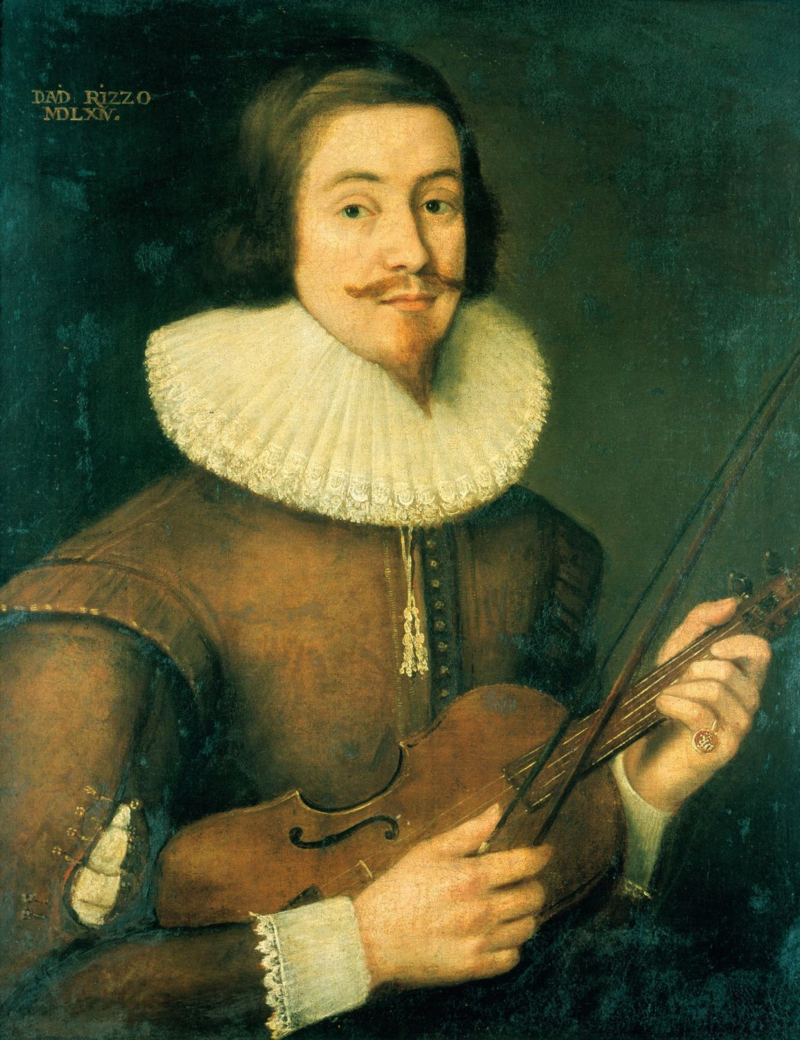
On the 9th March 1566, Mary held a small supper party in her private apartments in the Palace of Holyroodhouse. She was, at this point, six months pregnant and not in the most robust health. The supper was attended by her half-siblings, Robert Stewart and Jean Campbell, her equerry, her page, and Rizzio himself.
The private apartments connected to those of Darnley on the floor below by way of a privy staircase. It was at the doorway to this staircase that Darnley appeared with Patrick, Lord Ruthven, privy councillor and Darnley’s greatest supporter. Mary clocked the situation immediately and rose to challenge their presence. Rizzio also realised what was happening and threw himself behind Mary’s skirts to hide. It didn’t avail him much.
After a brief confrontation where Darnley and Ruthven laid various charges at both Mary and Rizzio, Mary refused to stand down. Ruthven then summoned five accomplices from Darnley’s chambers. They ran up the stairs and drew their weapons which included knives and pistols. One of which was levelled at the queen (possibly unintentionally) and her unborn child. In the commotion, Rizzio was dragged from the room and stabbed upon the staircase.
The assault was swift and brutal. Rizzio was stabbed between fifty-three and sixty times. In the moment, Darnley didn’t actually participate. This did not go unnoticed by his comrades, one of whom took Darnley’s dagger and delivered the final blow to Rizzio. The dagger was left there as proof of Darnley’s complicity.
The Rizzio plot was only the first part of a larger plan which would place the queen in the control of the plotters who would then control the government. Mary, however, was not cowed by the scenes of violence. In fact, she seemed to handle it better than the men who had actually committed the act. While Ruthven collapsed in a chair and called for wine, Mary took the glass from the servant who brought it and proceeded to berate the assassins. She did so with such fervour that the people of Edinburgh began gathering under her window shouting up to her. The city bell rang and the city guard turned out while Darnley tried to assure the people that everything was fine.
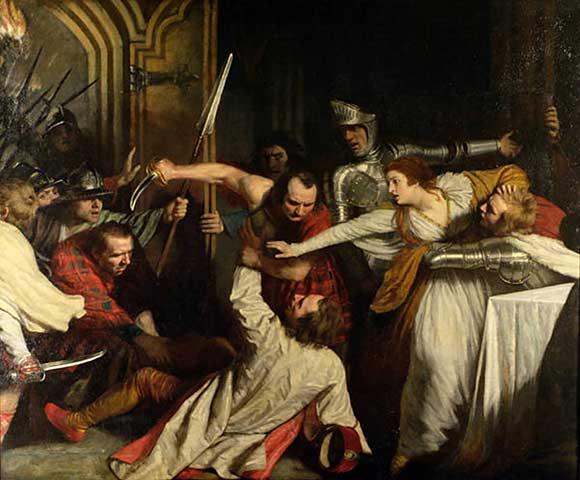
In the commotion, others within the palace were alerted to what was happening. The queen’s most loyal supporters, who were potential targets for the revolt, woke and managed to flee before they were captured. This included James Hepburn, the Earl of Bothwell, who we will be hearing a lot about. The queen was separated from her ladies, placed under guard, and the rebels prepared for their next steps.
Their experience with Mary during the assassination of Rizzio had apparently taught them nothing and they completely underestimated her. First, she feigned a miscarriage and a midwife was summoned. The midwife helped Mary by confirming the danger to the child and Mary’s ladies and attendants were returned to her. Next, she went to work on her husband, convincing Darnley that she wasn’t angry with him and understood that he meant her no harm. The revolt’s legitimacy centred on Darnley coming through it on their side. He was an unstable foundation upon which to build a revolution, and at this critical moment, he showed how unreliable he could be.
Mary and Darnley escaped with her attendants to Dunbar Castle. She was still six months pregnant and the ride was hard and long. They made it and immediately, with the help of supporters like Bothwell, she began making plans to take back Holyroodhouse from the rebels. To reward Bothwell for his support, Mary granted him Dunbar Castle which will become hugely significant later.
Nine days after she fled Edinburgh, Mary returned at the head of an army and took back control of the palace. Eighty men were indicted for their role in the plot. Their lands and titles were forfeit which forced the leaders of the rebellion, Ruthven among them, to take refuge in England. They appealed to the English Secretary of State, William Cecil, proclaiming the righteousness of their cause given that it was entirely approved by Darnley. Unfortunately for them, Darnley issued a statement claiming that he knew nothing of the plot, had been an innocent bystander in the whole affair, and renounced the rebels. In doing so, he practically confirmed their treason.
The Darnley Plot
Henry Stuart, Lord Darnley had been an attractive man who won Queen Mary’s heart. Within a month of meeting, their marriage was set, and within a month of marrying, Mary discovered that while he might be attractive, he was also vain, arrogant, aggressive, and unstable. He drank heavily which exacerbated his very many negative qualities. He was deeply unpopular and the Rizzio plot and its aftermath left him entirely isolated.
In participating in the plot, Darnley made enemies among the Privy Councillors he had sought to overthrow. In declaring that he had no part in the revolt, he alienated those who had put aside their dislike of him to at least work with him. But most of all, despite her assurances and sweet words, he had irrevocably destroyed his relationship with Mary.
It wasn’t just that he had murdered Rizzio. It was Mary’s firm belief that he had endangered her life and that of her baby. She believed the violence she witnessed could easily have turned on her. If the pistol pointed at her belly had misfired then both she and the child would have died. Incidentally, that’s not what Darnley wanted seeing as his power depended on his wife. But Mary thought that her life had been in danger and it was entirely Darnley’s fault.
In the months following the Rizzio plot, Darnley was pushed completely from the courtly sphere of influence. As the husband of the queen, he maintained a certain position but he had no place at court. Without Darnley or any of his supporters, those loyal to Mary dominated the Scottish court, and Bothwell became one of the leading powers.
In June 1566, Mary was delivered of a healthy son; James. In the lead-up, she made a new will and decided who would rule the kingdom if the worst happened. Darnley played no part in it though he received the conventional bequests from a wife to her husband. So did Bothwell and the other Privy Councillors. But the birth of James marked a new stage in his parents’ relationship. Mary was now completely uninterested in maintaining any kind of civil relationship with her husband in public and indicated to her councillors that she would not be opposed to a divorce or annulment, providing that it didn’t impact her son’s legitimacy or claim to the throne.
“Here I protest to God as I shall answer to him at the great day of Judgement, that this is your son and no other man’s son. I am desirous that all here, with ladies bear witness. For he is so much your son that I fear it will be the worse for him hereafter.”
-Mary to Darnley demonstrating how little civility she had left
With Mary and Darnley’s relationship beyond salvaging, the lords began to plot. Chief among those plotters was Mary’s Secretary of State, William Maitland. Maitland had been involved in the Rizzio plot but had recovered the queen’s favour and now directed his attention to removing Darnley. The last lord he approached was Bothwell who, in Darnley’s absence, had continued to rise at court.
In December, after Mary had recovered from a life-threatening sickness, James was baptised. Darnley was at the same palace as his family but he didn’t attend the event. In his place, Bothwell took a leading role in welcoming the visiting ambassadors but he boycotted the Catholic ceremony along with the other Protestant lords. Shortly after the baptism, Mary pardoned the majority of those involved in the Rizzio plot but her attitude towards her husband didn’t change.
In February 1567 Darnley was suffering from a severe case of syphilis and undergoing a course of treatment for it. In an entirely different residence in Edinburgh, Mary was concerned that without supervision Darnley was plotting again. She set out with some courtiers to retrieve her husband. Aware that he wouldn’t be interested in coming, she turned on the charm and he followed her back. He lodged in Kirk o’ Field with Mary in the rooms above him.
On the evening of the 9th of February, Mary attended a wedding. She returned to her husband’s side for a short time before she went back to the celebrations. In the early hours of the 10th, an explosion rocked Edinburgh. People flocked into the streets and Mary, who was staying at Holyroodhouse, woke up and immediately dispatched someone to investigate. They returned with the news that the tower in which Darnley was lodged had been blown up and reduced to rubble. Darnley himself was dead along with at least one of his servants.
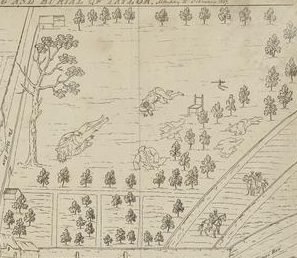
He had not, however, died in the explosion. He was found in a nearby garden and in lieu of burns or explosion-related injury, he’d been strangled. It’s now thought that he woke when he heard himself being locked into his room. Seeing men from the window and unable to leave, he realised that his life was in danger. With the help of a servant, he lowered himself from his room using a chair and a rope. He escaped the immediate vicinity of the tower only to be ambushed by one of the groups there to murder him. They probably intended him to die in the explosion and acted on impulse when they found him. Whatever the circumstances of his death, there was no doubt that Darnley had been murdered and Bothwell was chief among the prime suspects.
The Aftermath
For Mary, the fact that she had been at the tower and left before it exploded was proof that the explosion was meant to kill her too. Her survival was surely down to God’s providence. For everyone else, the same facts were proof that she was part of the plot. In the weeks following the murder, Mary relied on Bothwell even more heavily than she had before. For some this fueled rumours that the two had been in partnership. In the meantime, Bothwell’s wife fell deathly ill and this may have precipitated the first thoughts that he might be the next King of Scotland.
Darnley was buried without ceremony on Valentine’s Day of that year. The occasion was not marked at court which did not go unnoticed. By now, everyone knew that Bothwell and probably most of the Privy Council had been involved in Darnley’s murder. In Scotland, the Privy Council were the foundation of law which meant that when Mary left instructions that the murder was to be investigated it was the Privy Council that took charge of the inquiry. Nobody expected an objective verdict and Queen Elizabeth wrote to her cousin, informing her that the continent was awash with rumours that Bothwell had murdered Darnley and Mary would let him get away with it.
Bothwell was brought to trial which became a battle of his political power against public opinion. In the days before the trial, papers and notices were plastered around Edinburgh proclaiming Bothwell’s guilt. They were put there at the instigation of Matthew Stewart, the influential Earl of Lennox who was also Darnley’s father. On the day of the trial, however, Lennox was nowhere to be seen. Edinburgh was entirely under the control of Bothwell’s supporters who intimidated anyone who was opposed to their lord. It was due to their interference that ensured that Bothwell was acquitted of any charges against him.
Buoyed by his victory, Bothwell went on to gather the Privy Councillors together where he announced his intention to marry the queen. He secured their support (many of them agreed reluctantly) and had them sign a bond to affirm their agreement. Back at court, he continued to reap the rewards of Mary’s support which now saw him receiving a gift of her husband’s clothes from her. While she would be expected to make such gifts to her councillors, the decision to give this particular gift to Bothwell didn’t exactly quell the rumours.
At some point during this whirlwind of events, Bothwell proposed to Mary. Mary rejected the idea of marriage blaming the fact that he was so implicated and scandalised by Darnley’s death. Presumably she also mentioned that Bothwell was still married. His wife had recovered from her near-fatal sickness which somewhat took Bothwell off the market. He was not deterred and was known to boast that he would marry her whether she wanted it or not.
The Abduction
On Monday 21st April 1567, Mary left Edinburgh to visit her son James. He was now ten months old and she spent a couple of days with him, returning on the Wednesday. During the journey, Bothwell appeared with eight hundred men and told Mary that there was a disturbance in Edinburgh and that for her safety, she should allow him to take her to Dunbar castle. Mary believed it and sent a man ahead of them to warn her allies in Edinburgh, accompanying Bothwell to his castle.
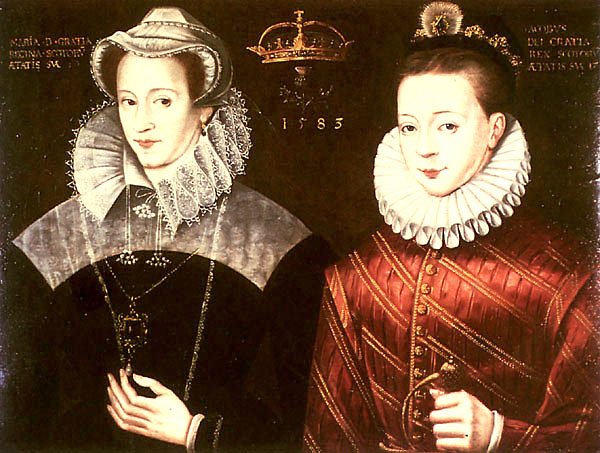
When the man arrived in Edinburgh, it quickly became apparent that there was no threat to the queen. The city alarm rang but by then nothing could be done. Mary was secured in Dunbar castle and could not be retrieved. Inside the castle, Mary also began to realise that something was wrong and this is where the question of rape comes into play.
Three days later, Bothwell left Dunbar and rode to see his wife. He secured a divorce from her with such speed that it had to be premeditated. The necessary arrangements had already been made and all that was required was her agreement, which she readily gave. This freed Bothwell, allowing him to marry Mary. But he would only have acted in such haste if Mary had agreed to marry him which she had apparently done so during her three day captivity.
It’s during these three days that Bothwell is said to have bedded the queen. By doing so he guaranteed that she would have to marry him. The alternative would be allowing any children conceived by the act to be illegitimate which Mary would never have allowed. An assault against the queen was unthinkable and the people were outraged, even more so when it became clear that Mary was going to marry him. Once he secured her verbal agreement only sleeping with her could ensure that she wouldn’t change her mind.
A number of lords united in protest and joining in common cause, they called themselves the Confederate Lords. Many of them had signed the bond that Bothwell presented to Mary showing support for their marriage, but now they signed a new bond. This one had three specific aims; to free Mary, to preserve her son James, and to kill Bothwell.
On the 6th of May, Mary and Bothwell processed into Edinburgh to a muted reception. Witnesses reported that both of them looked muted and sullen but that might have been a reaction to their frosty welcome. Banns were sent to the Archbishop to read but he refused to do so unless he heard directly from Mary. She sent word assuring him that the marriage was her wish and that she had not been forced by Bothwell. The Archbishop read the banns but denounced Bothwell extensively in the pulpit. When Bothwell visited him and confronted him, the Archbishop denounced him to his face.
The Aftermath Pt II
There are conflicting reports on how Mary enjoyed her wedding to Bothwell. Some say she was ecstatic, wearing a new gown of black velvet embroidered in gold and silver thread. Others say she was miserable, wearing an old dress, and giving her husband no more wedding present than a formal pardon for abducting her.
Everyone is in complete agreement, however, that the following day, whatever proclamations Bothwell had made to her came undone. She spent the day lamenting that she had ever married him and on several occasions she proclaimed that she wanted to end her life, going so far as to ask for a knife from a servant to stab herself with.
In marrying the man who had murdered her husband and abducted her, Mary had suffered an irreparable loss of her reputation. All those who opposed Bothwell now opposed her too and the Confederate Lords moved to remove her from the throne. Further, in marrying Bothwell, rumours that Mary had been involved in her husband’s death were apparently confirmed. Bothwell’s favour at court was attributed to an adulterous affair which had led them both to kill Darnley. The abduction and possible assault were then staged to save what reputation Mary had left in marrying her lover. The queen was therefore an adulteress and a murderer who could not be trusted with the security of the realm. Across the border, Elizabeth was astounded by what she heard about Bothwell and Mary, but when asked to assist in forcing an abdication, she steadfastly refused. In fact, she threatened to go to war to preserve Mary’s throne something which Mary knew nothing about.
Five weeks after Mary and Bothwell married, they were parted. Bothwell was declared an outlaw and Mary imprisoned. She had indeed conceived during her abduction and she now miscarried twins. The following day, still in her sickbed, Mary was forced to abdicate. The throne of Scotland now passed to her infant son, James, under the protection of the lords. Mary did manage to escape to England where she would spend the rest of her life in various English prisons before her eventual execution. Bothwell also escaped Scotland but instead died in prison in exile.
A Question of Rape
So, did the Earl of Bothwell rape Mary, Queen of Scots?
Bothwell was aggressive, impulsive, and violent. It was certainly within the bounds of his personality to do so and the Scottish lords believed it of him. He abducted Mary with the intention of convincing her into marriage and raping her would definitely have forced the issue.
“The Queen could not help but marry him, seeing as he had ravished her and laid with her against her will.”
– James Melville, one of Mary’s confidantes
Mary’s abduction was not a spur of the moment affair. Bothwell showed up with eight hundred men and a plan. He had already arranged his own divorce and settled with his wife’s family. The paperwork was already drawn up and the only thing that was needed was his wife’s assent. He was entirely prepared in every sense to marry Mary and it’s doubtful that he would have accepted another rejection. He couldn’t afford to. For a start, if his bid failed then he was guilty of abducting the queen which could easily become a charge of treason. His situation was desperate and, according to the historical record, Bothwell doesn’t seem to be the kind of guy who needed a situation to become desperate before he acted rashly. Mary was also notoriously straight-laced when it came to sex, so many of her lords found it hard to believe that she would have consented to have slept with a married Bothwell. All in all, there was plenty of evidence to suggest that he had indeed raped her.
In her letter to the Archbishop, Mary insisted that Bothwell hadn’t raped her but there were those who thought that this was a means of protecting what little reputation she had left. She was also only keen to protect her marriage for as long as she was pregnant. After losing their twins, Mary seemed open to the idea of an annulment or divorce, and as a Catholic hadn’t recognised their Protestant marriage rite anyway. There were those who thought the abduction and subsequent ravishment was part of a plan to make her marriage to Bothwell palatable but if this were the case, Mary clearly didn’t subscribe to it. She was at no point infatuated with her husband though she never claimed that she had been coerced into it.
History is divided on the subject. Five hundred years later, it’s still a contentious subject. Mary’s biographer, John Guy, believed that Mary had no knowledge of the abduction which took her by surprise but that she wasn’t raped. She was persuaded into marriage and slept with Bothwell to seal the contract but she wasn’t forced. On the other hand, contemporaries believed that sexual assault was entirely within Bothwell’s character, and sex with Bothwell was entirely beyond Mary’s. Mary herself never confirmed an assault and her reasons for marrying Bothwell never referred to her abduction. Instead, she pointed to the bond Bothwell produced which contained the signatures of the Scottish lords in support of the marriage. For Mary, the marriage was rooted in the political stability of her country which is why it’s so bitterly ironic that it was marrying Bothwell that ended her reign.
If you’d like to join me behind the scenes for stories that didn’t make the post, including how Bothwell died and other historical tidbits, you can support me via my Patreon.

